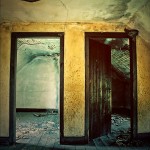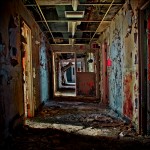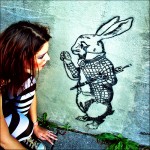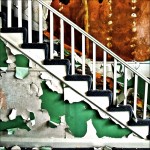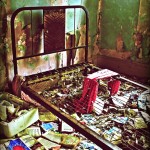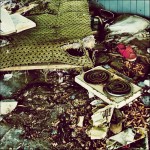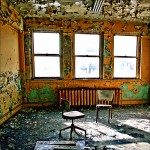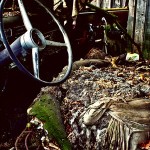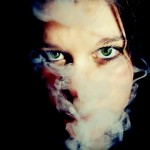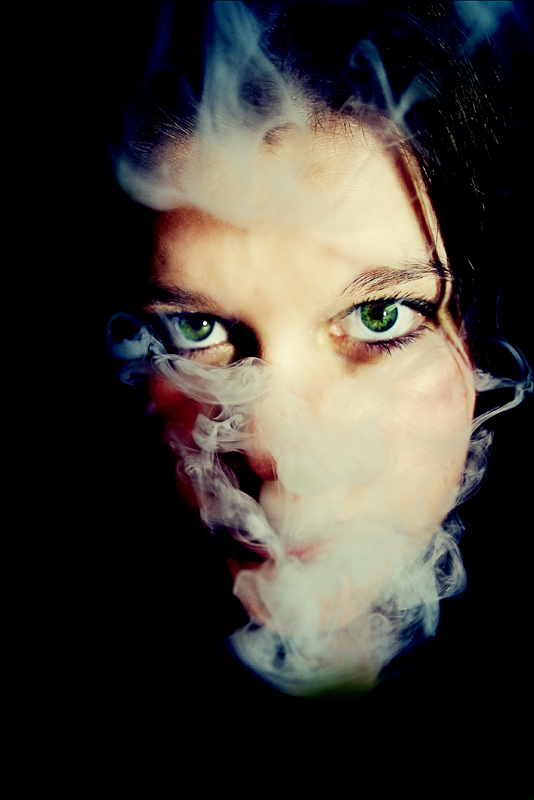 Lo spazio di Vis-àvis, oggi, è dedicato alla canadese Alicia Lawson, meglio conosciuta su Deviantart come Abandoned-Echoes. Una giovane fotografa con le idee molto chiare su ciò che vuole esprimere e come lo vuole fare. Da sottolineare, oltre al fascino delle sue opere, semplici ma molto efficaci, è la poetica che ad esse si lega: Alicia, attraverso i suoi scatti, si fa interprete e testimone di storie passate impersonate dai posti abbandonati e desolati che con la sua Canon 350d cattura.
Lo spazio di Vis-àvis, oggi, è dedicato alla canadese Alicia Lawson, meglio conosciuta su Deviantart come Abandoned-Echoes. Una giovane fotografa con le idee molto chiare su ciò che vuole esprimere e come lo vuole fare. Da sottolineare, oltre al fascino delle sue opere, semplici ma molto efficaci, è la poetica che ad esse si lega: Alicia, attraverso i suoi scatti, si fa interprete e testimone di storie passate impersonate dai posti abbandonati e desolati che con la sua Canon 350d cattura.
Per conoscerla meglio seguito la nostra intervista.
1. Qual è stata la tua formazione e come ti sei avvicinata all’arte in generale e al genere che pratichi in particolare?
Mi sono sempre sentita un’artista e ho cercato di esprimermi in diversi modi…la fotografia mi intriga perché le fotografie sono usate per catturare qualcosa, così com’è, una riproduzione, ma io uso la fotografia per esprimere il modo in cui vedo il mondo, non necessariamente come esso appare.
Ho fatto due anni di college con indirizzo “immagine digitale”, ma il mio stile nasce da altre influenze, esplorando la mia versione di fotografia.
2. Quali sono le tue fonti di ispirazione?
La mia ispirazione nasce da qualsiasi cosa, il mio stile si è evoluto grazie agli altri tipi di fotografia che ho visto, alle persone che ammiro, ai sogni…tutto ha qualcosa che mi piace e che cerco di applicare nel mio lavoro.
3.Quali sensazioni vuoi comunicare attraverso le tue opere?
Principalmente voglio che i miei lavori esprimano a chi li guarda il modo in cui vedo il mondo, e gli mostrino un mondo di cui, forse, prima non conoscevano l’esistenza…quello abbandonato. I posti che fotografo sono dimenticati, e molto probabilmente le persone che ne conoscevano la storia sono scomparse da tempo…
4. Descrivi il tuo lavoro.
Le mie tecniche di editing scaturiscono da molte idee differenti, giocando con il colore, la saturazione, ecc…per ottenere un effetto che parli per l’immagine. Mi baso molto sulla sperimentazione. Normalmente faccio più versioni della stessa fotografia, lasciandole per diversi giorni in una cartella sul mio computer, poi ci ritorno e le riguardo e decido quale è la migliore.
Uso una Canon 350d e, per modificare le immagini, uso Adobe CS3.
5. Quanto tempo impieghi per progettare e realizzare un’opera?
A volte quando faccio una foto e so esattamente come verrà quando la modificherò, altre volte faccio riferimento a una vecchia serie di fotografie realizzando il potenziale di quello scatto che inizialmente non era venuto alla luce. Occasionalmente scatto una foto per ispirazione istantanea ma ci sono dei tempi definiti in cui ho l’idea e la sviluppo attraverso numerosi tentativi per ottenere qualcosa che assomigli a ciò che voglio.
6. Usi un filtro o modifichi le tue foto in seguito?
Scatto le mie foto nel formato RAW e poi le modifico con Photoshop. Faccio alcune modifiche in RAW e poi le modifico ulteriormente. Per la maggior parte, modifico colore, contrasto, saturazione e curve e aggiungo nitidezza e disturbo se necessario.
7.Nella Foto “Go Ask Alice” c’è il Bianconiglio…ti senti a volte come Alice nel paese delle meraviglie?
Credo che tutti ci sentiamo un po’ Alice ad un certo punto, sperduti in un mondo estraneo. Questa foto proviene da uno scatto basato sui graffiti con soggetto il Bianconiglio che ho trovato un giorno per caso. La modella, Martina, rappresenta una Alice contemporanea in un paese delle meraviglie urbano.
8. Ritieni che sia dato sufficiente spazio agli artisti nei canali istituzionali? Come ritieni che si possano superare i limiti dall’arte ufficiale?
Penso che per buona parte della mia vita ho notato che l’arte tenda a cadere sotto le priorità di molte istituzioni, mancando programmi fondamentali per reperire fondi e supporto per l’arte. Anche mentre seguivo un programma di arte al college, si vedeva la mancanza di denaro che era stato stanziato per quel tipo di programmi. Penso che le limitazioni dell’arte ufficiale possono essere superate se noi smettiamo di farla per considerarla ufficiale.
9. Quali sono i tuoi prossimi progetti?
Spero di fotografare nuovi posti abbandonati e, inoltre, mi piacerebbe sperimentare più ritratti.
Original Version
1. What training do you come from and how did you approach art, the genres you practice in particular?
I have always felt artistic and been open to expressing myself in different ways, photography really intrigued me because photographs are used to capture a record of something, as it was, a replication. But I use photograph as a means of expressing the WAY I view things in the world, not neccesarily how they look. I have had 2 years of college in a digital imaging course, but my style comes from other influences, and me exploring my own version of photography.
2. What are your sources of inspiration?
My inspiration comes from everywhere really, my style was developed because of the other types of photography I saw, people I admire, dreams, media… everything had something that I liked and tried to apply to my own work.
3. What kind of sensations do you want to communicate through your works?
Mostly I want my work to show people the way I see the world, and display a world that maybe they didn’t know existed before… the abandoned one. the places I photograph are forgotten, and more than likely the people who know their history are long gone… so by showing other people the pieces that are left behind, I feel like I’m passing on part of the story.
4. Describe your work and the techniques you use.
My editing techniques come from lots of different ideas, playing with color, saturation, etc..to achieve a look that I think speaks for the picture and works well. It’s all about experimentation. Usually I do several different edits on the same photograph, leave them for a few days in a folder on my computer, then go back and look at them and decide which one looks the best. I shoot with a Canon 350d, and use Adobe CS3 for all my postwork.
5. How long does it take you to conceive and realize a work?
Sometimes when I’m taking a photograph I know exactly how I want it to look when I edit it, other times I may look back on an older set of photos and realize the potential in shots that didn’t stand out the first time. Occasionally, its instant inspiration, but there are definitely times that I have an idea and it takes several tries to make something look the way I want it to.
6. Do you use a filter on your camera or you manipulate your photos?
I shoot my photographs in RAW format and edit them using Photoshop. I partially do some edits in RAW and then manipulate them further. For the most part, I only manipulate color/contrast/curves/saturation and add sharpness & noise reduction if needed.
7. In your photo ” Go ask Alice” there is the white rabbit…do you feel like Alice in the wonderland?
I think we all feel a little bit like Alice at some point, lost in a strange world. That photograph was from a shoot based around that white rabbit graffiti that I found one day. The model, Martina, was meant to be a modern day Alice in an urban wonderland.
8. Do you think artists are given sufficient space in institutional channels? How do you think limitations of official art could be overcome?
I think that for the better part of my life I have noticed that art tends to fall below the priorities of most instituions, with a lack of funding and support of art fundamental programs. even while taking an art program at college myself, you do see the lack of money that is given for these types of programs. And yet across campus, the health studies students have expensive lab equipment. I think the limitations of official art can only be overcome if we stop making it to official.
9. What are your next projects?
I am hoping to photograph some new abandoned places and also I’d like to experiment with more portrait based works.

